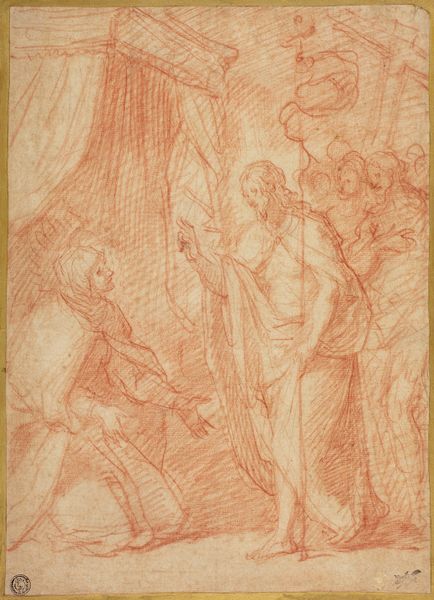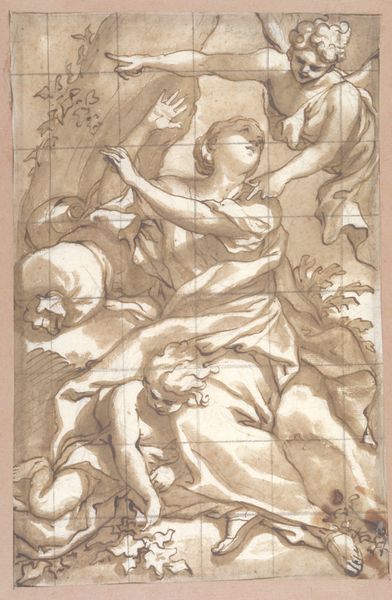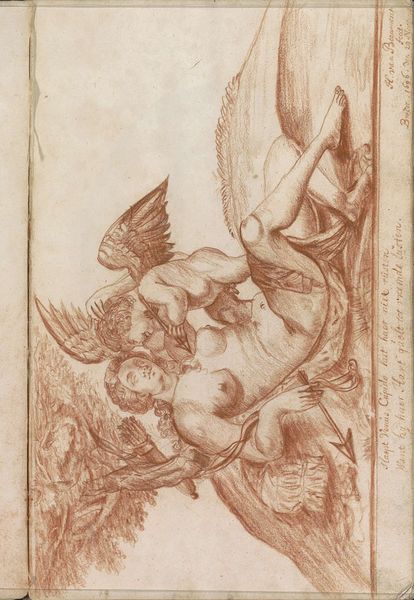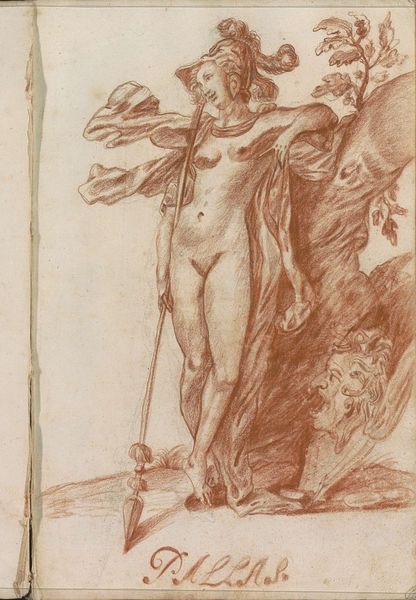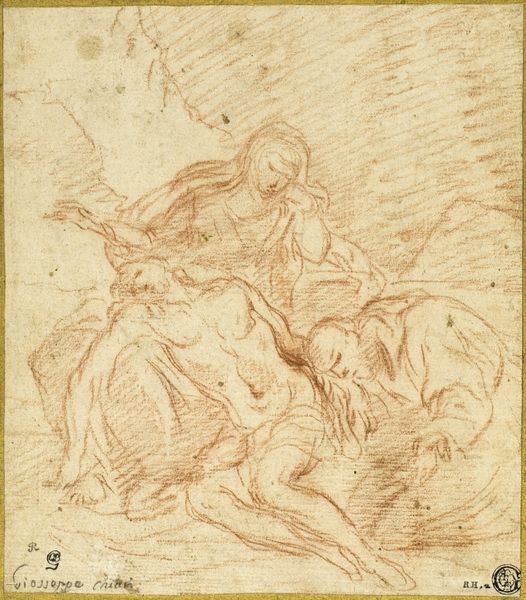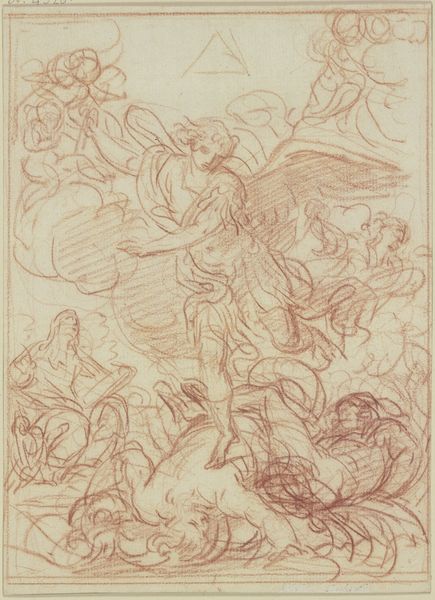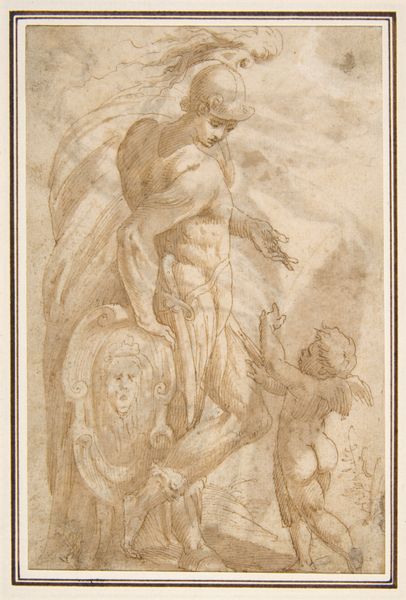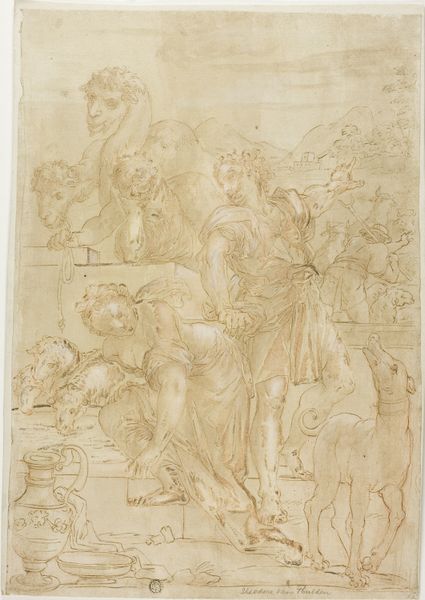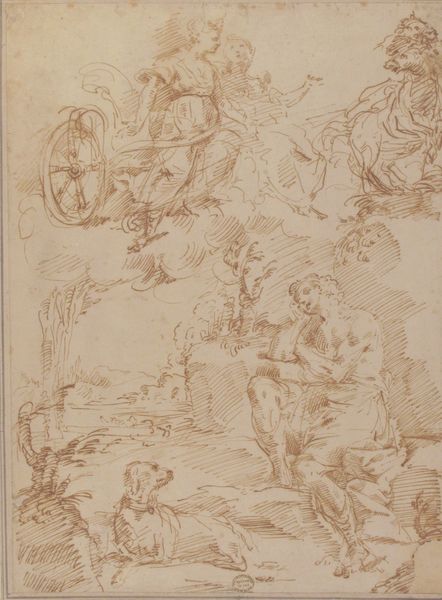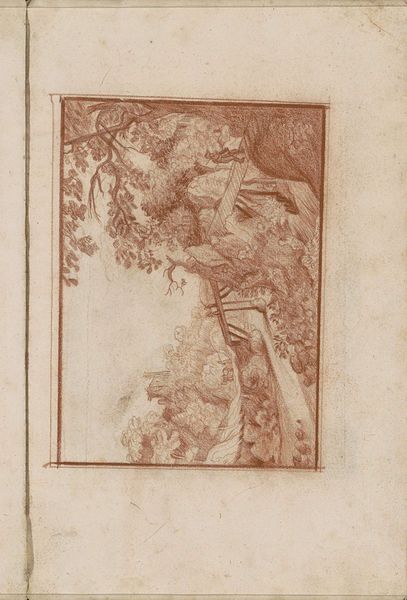
drawing, paper, pen
#
pencil drawn
#
drawing
#
toned paper
#
allegory
#
baroque
#
charcoal drawing
#
figuration
#
paper
#
pencil drawing
#
pen
#
portrait drawing
#
nude
Copyright: Rijks Museum: Open Domain
Editor: This drawing, titled "Muziek," was created in 1696 by Hendrick van Beaumont. It's done with pen and pencil on paper, in tones of brown. The winged figure dominating the composition gives a really classic feel. How do you interpret this work? Curator: This piece calls for a contextual reading. It's not just a pretty figure; it embodies deeply entrenched power structures and idealized representations of gender. Who gets to represent “music,” and what does that mean for those excluded from that definition? Editor: I see what you mean. So, beyond the surface of a baroque-style allegory, there’s a social commentary at play? Curator: Precisely! Beaumont is working within a system where artistic expression and even "genius" were gendered and classed. Consider how the nude figure, likely meant to represent a muse, perpetuates certain aesthetic ideals while silencing other voices. Can we divorce this depiction from the broader historical context of male dominance in the arts? Editor: It sounds like we can’t. What strikes me, now that you point that out, is the contrast between the flowing robes and the kind of academic depiction of the body, like it's a statement of authority and control. Curator: Exactly! What appears harmonious actually reflects power dynamics and cultural norms that deserve interrogation. Where do we locate contemporary meanings? What about gender fluidity or diverse artistic expression? This is what this image makes me think about. Editor: This has really expanded my perspective; I didn’t expect a drawing like this to have such a connection to modern dialogues. Curator: By engaging with historical context, we create meaningful dialogue between the past and present, broadening our understanding of art’s complex role.
Comments
No comments
Be the first to comment and join the conversation on the ultimate creative platform.
